Blog: Applications
LIMS Data Analytics and Visualization
22nd June 2024
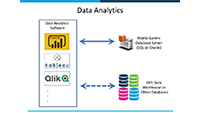
LIMS Data Analytics and Visualization tools graphically present data from your LIMS, and potentially other applications, to provide powerful business intelligence for your laboratory and organization. Like all LIMS, Xybion LIMS uses a relational database (usually Microsoft SQL or Oracle) to store the LIMS data. Data Analytics tools provide another way to present this data. Using their ability to aggregate information and present it in the form of simple to interpret graphs, tables and diagrams, these tools allow key LIMS information to be represented in way that facilitates the decision-making process.
Typical LIMS Data Analytics and Visualization tools
There are many data analytics tools on the market including Zoho, PowerBI, Qlik and Tableau. They connect to one (or more) data sources (including databases and/or spreadsheets) to extract the required data. Any of these tools can be used for LIMS Data Analytics though corporate IT policy, previous experience or the preferences of your data science group may dictate which you use.
Data Analytics tools allow read only access to data from multiple sources. An organization may have deployed a data warehouse to hold a subset of key data from across the business. A well implemented data analytics tool will be able access this data, as well as the full set of data available in the LIMS, to provide exceptional insights into the operation of the laboratory.
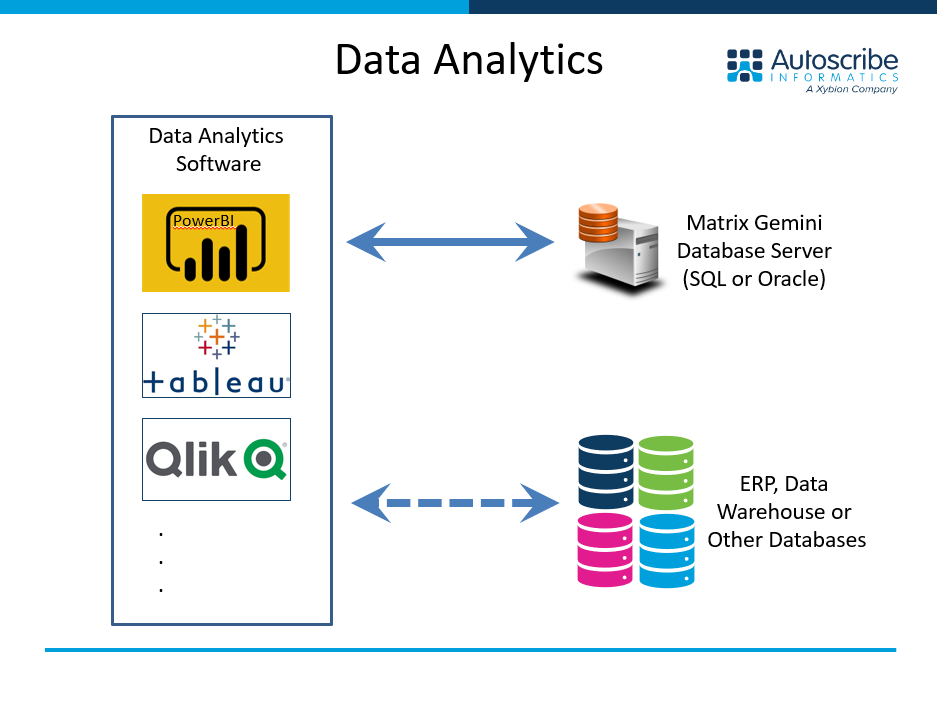
Know your LIMS Data
The hardest part of working with analytics tools is understanding how to extract the right data from the right tables in the right databases. The database tables for any particular LIMS are of a standard format. A document describing those table structures will usually be available from the vendor. If not, it is still important to understand the structure of the data in the database and the relationships between the various database tables. Knowing this will make using the analytics tools simpler and ensure that the correct data is extracted.
Accessing your LIMS Data Analytics Application
Xybion LIMS provides a highly configurable user interface, so it is no surprise that your preferred data analytics tool can be integrated and made available from any workflow screen. Access to the tool, and the data, can be controlled on a user by user basis depending on their authority levels.
For the examples in this article we have used PowerBI as the data analytics software.
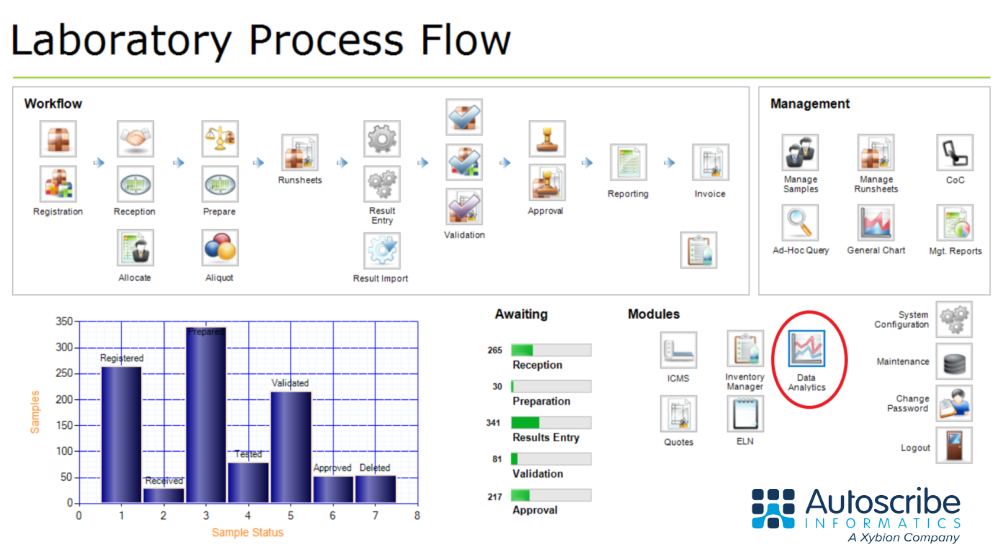
Typical Charts, Graphs, Maps and Tables - Some Worked Examples
Almost any data can be pulled from the database(s). A typical example would be to show the status of samples in the laboratory (registered, received, prepared, tested, validated) at a point in time using a pie chart. Management charts might include graphical representation of key data such as throughput of samples per year.
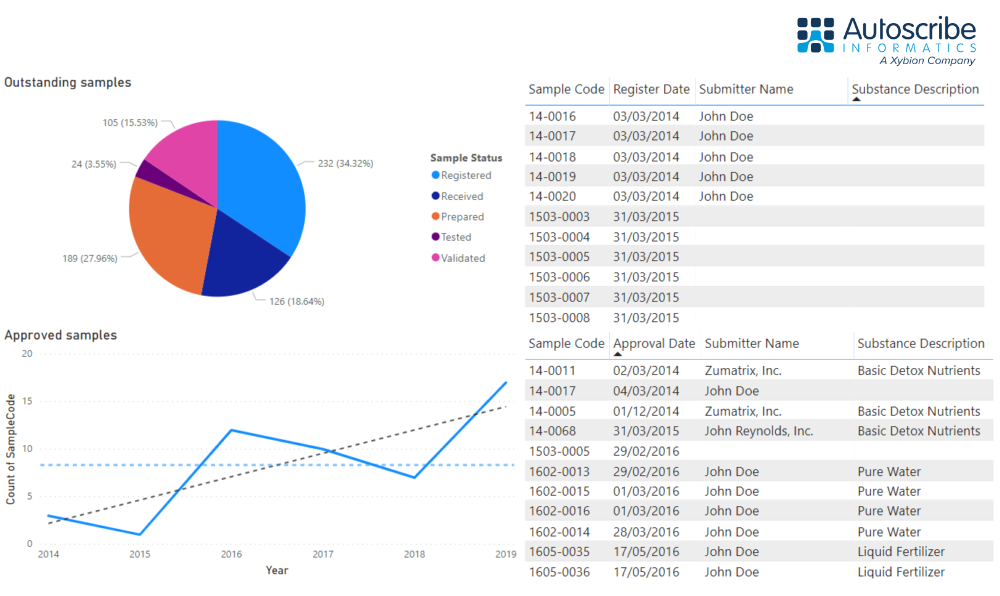
Built in mapping functions can plot data to zip/post codes. This is useful where you want to highlight the source location of samples e.g. to map positive results of a test to location. This can quickly show data as geographic clusters and can be useful in investigative projects. Since PowerBI is being used here the results are mapped onto a Bing map. Other analytics tools use other mapping applications, but the results would be similar. PowerBI also includes the ability to type in a question about the data e.g. ‘Show me the count of tests performed by result entry date’. Power BI interprets this question, pulls the data, and shows it in a relevant format.
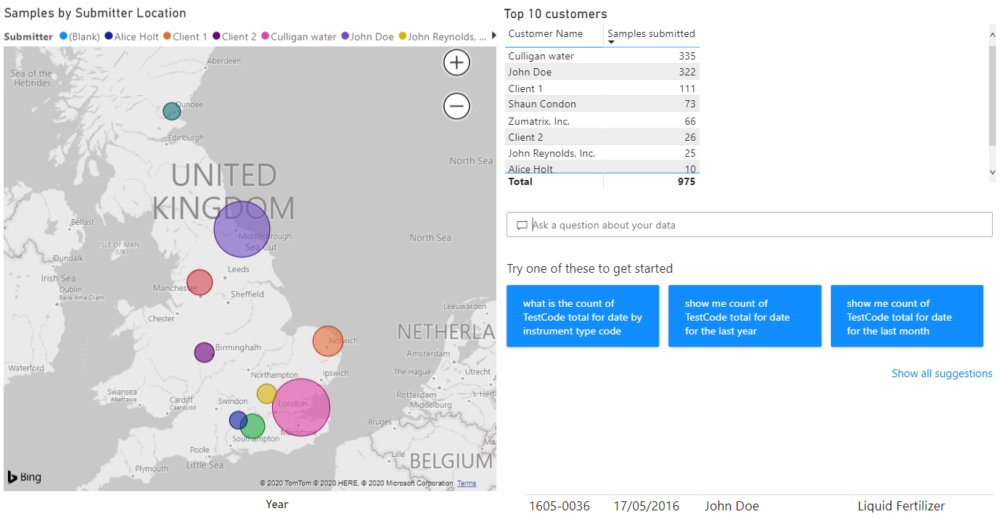
In a commercial laboratory, costs may be associated with each test. This allows analytics tools to highlight which tests create the most revenue, rather than just the number of times each specific test is performed. These can also be split by month/year to show, for example, the popularity and profitability of each test type over time. Overall profitability per instrument, per analyst, per site and so forth is also possible.
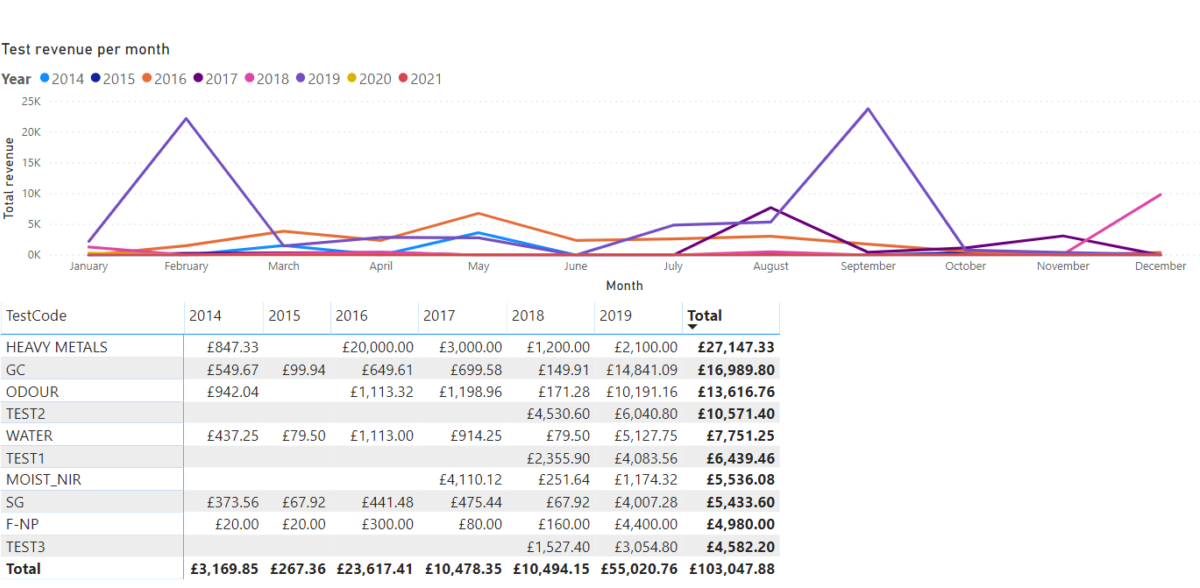
Data can also be shown as simple tables. In this example the number of samples and number of tests per year is shown. Note how users can interact with the table by clicking on the year to expand it to show a more detailed monthly view. Users can interact with all graphs, charts, and tables in this way. This can trigger secondary graphs, charts, and tables to update on the dashboard, as you would intuitively expect, ensuring all data in view is relevant.
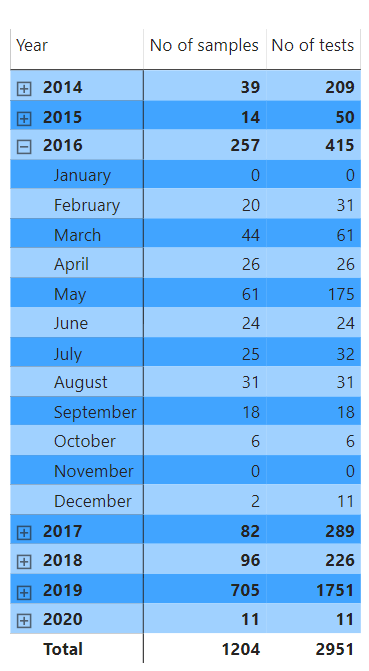
Why use LIMS Data Analytics Tools
Data analytics tools allow you to view and analyze all the laboratory data stored within the LIMS, allowing you to:
- Identify bottlenecks causing performance issues
- Find opportunities for improvement
- Investigate and discover root causes
- Draw conclusions from seemingly disparate data (such as geography and test results)
- Make critical business decisions
Many organizations today already use data analytics tools across their business to help analyze, understand, and improve efficiency. Whether you need management graphs for your monthly meeting, or data to drive quality improvement, LIMS data analytics and visualization tools provide a defendable framework to help you argue your case.
Connecting LIMS Data Analytics Tools
If you use Xybion LIMS and would like to explore your data using data analytics and visualization tools then please contact us. We would be pleased to show you how you can link Data Analytics into your LIMS workflow and get you started.